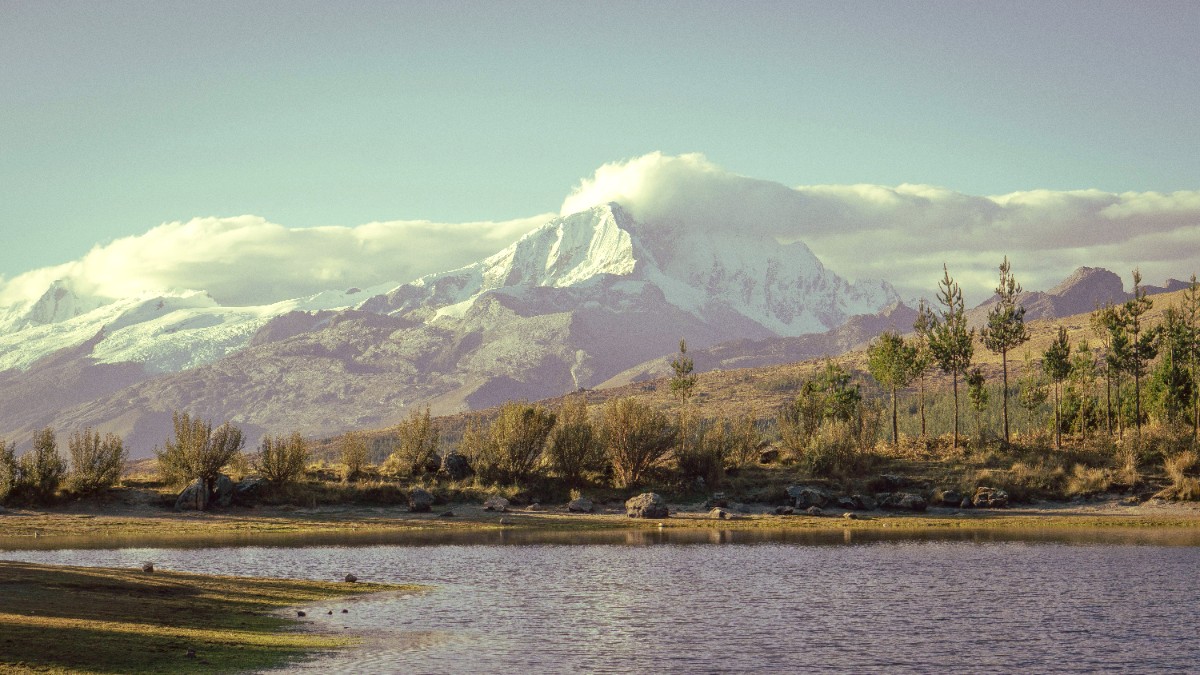
Huaraz And The Cordilleras, Peru
Many stunning locations exist within day-trip distance from Huaraz, presenting diverse experiences. Pastoruri Glacier exhibits a receding glacier offering a high-altitude walk (above 5,000m) to view climate change. Laguna Parón, the largest lake in the Cordillera Blanca, is celebrated for its deep blue waters and surrounding peaks, accessible by vehicle for a relaxed visit.
Llanganuco Lakes (Chinancocha and Orconcocha) are two picturesque lakes easily visited as part of a tour. Chavín de Huántar, an UNESCO site, provides a deep dive into pre-Incan history. Thermas de Monterrey (Monterrey Hot Springs) present relaxing natural hot springs. Wilcahuain (Willcahuain) is a pre-Incan archaeological site closer to Huaraz. Laguna Wilcacocha is a popular half-day hike with excellent views.
The region around Huaraz is a paradise for nature lovers, presenting diverse natural landscapes. Huascáran National Park is the main nature reserve. Many day trips directly include entering and exploring its valleys and lakes. Its protected status means preserving unique ecosystems and stunning glacial landscapes.
The Puya Raimondii Forest, found in specific park areas (e.g., near Pastoruri), features the world's largest bromeliad. Quebrada Llanganuco is home to the famous Llanganuco Lakes and serves as a gateway to many trekking routes.
The clear skies of the dry season (June-August) present the best views of snow-capped peaks and glaciers. During the wet season (October-April), waterfalls grow more abundant, and lower valleys appear lush and green.
The region presents opportunities for historical and cultural exploration beyond Huaraz. Chavín de Huántar is the foremost archaeological site, offering a profound look into early Andean high cultures.
A UNESCO World Heritage site, this ancient ceremonial center presents insights into pre-Incan history and intricate architecture.
Villages like Carhuaz or Caraz offer a glimpse into traditional Andean life, local markets, and distinct regional charm.
Religious sites, like Señor de la Soledad Church in Huaraz, serve as local hubs during festivals.
Organized tours or independent travel via Collectivo take visitors to smaller rural villages within the Callejón de Huaylas. You observe agricultural practices and artisan crafts.
Chavín de Huántar stands out as the foremost important archaeological site. Its intricate architecture and religious meaning deliver a profound look into one of the earliest high cultures of the Andes.
For visitors with more time, Huaraz is a perfect starting point for multi-day treks or connecting to other Peruvian regions.
The Santa Cruz Trek, a classic 3-4 day option, presents a comprehensive trekking experience through Huascáran National Park. Ishinca Valley is a shorter multi-day option (3-4 days) suitable for high-altitude camping and easier peak attempts.
Head north to Trujillo and Chiclayo for Moche and Chimú archaeological sites. Return to Lima for its culinary scene and museums. Fly to Cusco for the heart of the Inca Empire: Machu Picchu, Sacred Valley, Rainbow Mountain.
Journey south to the "White City" of Arequipa. Explore the dramatic Colca Canyon, a locale known for condor sightings. This regional connection presents diverse landscapes and wildlife viewing.
Long-distance buses link Huaraz to Lima, Trujillo, and other major cities, standing as the most common and reliable method. Domestic flights from Anta (ATA) to Lima (LIM) present a quicker return to the capital, though flight reliability warrants consideration.
Combine Huaraz (trekking) with Cusco/Machu Picchu (Inca history) and Arequipa/Colca Canyon (Southern Andes) for an Andean Adventure. Pair Huaraz with Trujillo and Chiclayo for a Northern Peru Circuit, blending mountain adventure and ancient coastal archaeology.
Huaraz (trekking), Cusco/Machu Picchu (Inca history), Arequipa/Colca Canyon (Southern Andes).
Huaraz (mountains), Trujillo/Chiclayo (ancient coastal archaeology).
This region presents distinct geographical and cultural aspects for a richer travel experience.